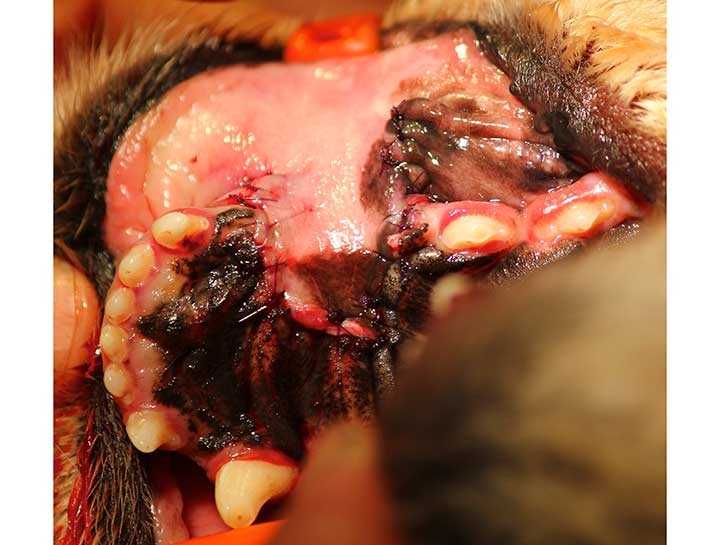Periodontics
The most common disease seen in pets.
Periodontal disease is the most common disease we see in our pets. The periodontal structures of the tooth refer to the attachment structures involving the gingiva (gums), periodontal ligament, cementum, and alveolar bone (bone that surrounds the root). Periodontal disease results when there is infection and inflammation. The usual cause is bacteria and this results in destruction to the supporting structures of the tooth. As “bad “ bacteria invade the affected tissue, the tissue becomes inflamed and results in various stages of periodontal disease from gingivitis, gingival recession (gum loss) or hyperplasia (excessive gum growth). Bone loss around the roots results in deep periodontal pockets, progressing to tooth mobility from extreme attachment loss.
It is important to fully evaluate a pet’s overall health before treating mouth issues. Bacteria and their byproducts have been directly associated with systemic illness that can result in disease of the kidneys, pancreas, liver, and heart. Systemic illnesses can also contribute to periodontal disease. Cats need to be screened for feline leukemia (FeLv) and feline immunodeficiency virus(FIV). Other systemic illnesses such as liver disease, diabetes, Cushing’s disease, hypothyroidism, and immune-mediated diseases like Lupus or Pemphigus can affect the periodontal structures.
The treatment selection for periodontal disease will depend upon its severity. In most cases, patients teeth are cleaned below the gums with ultrasonic equipment and deep periodontal pockets are root-planed. Odontosonic technology allows us to provide a thorough deep-root planning without damage to the vital pulp structures of the tooth. The primary goal is to reduce periodontal pocket depth and minimize attachment loss. Severe gum loss can be helped with free gingival grafts or sliding muco-periosteal grafts from adjacent teeth. Teeth that can’t be salvaged should be extracted to eliminate pain and the potential of systemic illness (See section on Tooth Extraction).
There are many different surgical techniques available to treat severe periodontal disease. The goal may be to promote periodontal ligament regeneration or use bone replacement materials to replace bone loss. One serious sequel to untreated periodontal disease in the maxillary teeth is oronasal fistula, a condition that allows foreign substances or bacteria to enter the nasal cavities. This can lead to chronic nasal discharge and infection.
There are several different surgical techniques used to repair these defects depending upon the severity, and all of these dental treatments are available at our hospital.
Call us at (530) 272-6651 today to schedule your pet's next dental exam!

